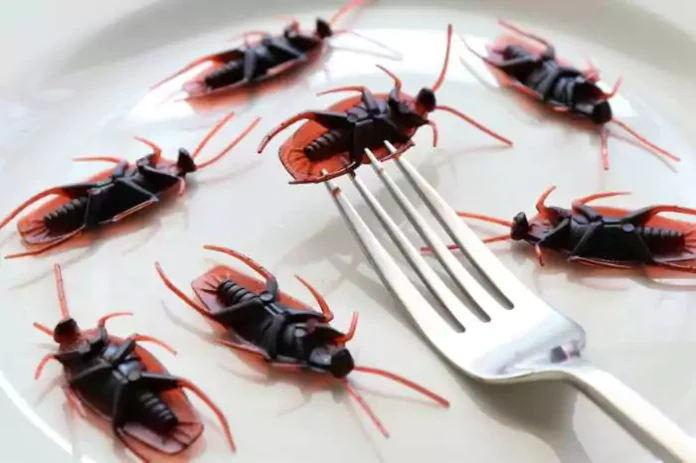The sight of kitchen roaches, termites and mosquitos on a floor, wall or in a cupboard can send shivers down your spine. These pests are not only creepy crawlies, but also disease carriers and can trigger allergies. If you find yourself sharing your kitchen with roaches, don’t despair. Here’s a comprehensive guide to getting rid of them for good.
6 Ways to Get Rid of Cockroaches From the Kitchen
1. Know Your Enemy
The first step to defeating roach infestation is understanding cockroach habits. The German cockroaches are particularly notorious among other species. These roaches reproduce quickly and are attracted to three things: food, water, and shelter.
They feed on almost anything, including glue, toothpaste and soap. They’re also attracted to cardboard boxes, so clear your kitchen of delivery pizza or cake boxes that are lying around. Luckily, these roaches don’t often fly, so you won’t have to swing around your slipper or swatter. After decluttering, clean the ceiling, walls, cabinets and floor.
2. Clean Your Kitchen Thoroughly
Cockroaches thrive in dirty and sticky spaces. Crumbs, spills, and grease act as a five-star buffet for these pests. Here’s how to clean your kitchen to deter roaches:
- Deep clean: Don’t just focus on surfaces – get down and dirty. Move appliances to clean behind and underneath them. Pay close attention to areas where food debris accumulates, like around the sink, stovetop, and toaster.
- Store food properly: Don’t leave out pet food or open containers of human food on the counter. Invest in airtight containers for dry goods and store leftovers in the refrigerator.
- Take out the trash regularly: An overflowing trash can is a roach magnet. Empty your trash bin daily and keep it sealed with a tight-fitting lid.
- Fix leaky faucets and pipes: Kitchen roaches need moisture to survive. Eliminate any sources of standing water by fixing leaky faucets and pipes promptly.
Remember, cleaning not only deters kitchen pests but also promotes a healthier, more enjoyable living space.
3. Check For Entry Points

Closing off potential entry points is an important step in your long-term roach control plan. Here’s where to check:
- Look for cracks or crevices, especially near pipes, kitchen cabinets, under the sink and behind the refrigerator.
- Pay special attention to areas where cables or wires enter your house, including around electrical outlets.
- Check the weather stripping around your exterior doors and make sure there’s no gap underneath them.
Tip: Using caulk is effective in sealing cracks.
4. Set Up Traps and Baits
After cleaning and sealing, it’s time to lay traps and baits to target the remaining roaches. There are different brands of cockroach gel baits. Do your research and check the forums to know which one’s effective. Here are two effective methods:
- Glue traps: While not the most pleasant sight, these traps help monitor roach activity and catch any remaining roaches. Place them in dark, secluded areas where kitchen roaches will likely hide.
- Cockroach bait: This method is highly effective for eliminating entire roach colonies. The bait contains a slow-acting poison that roaches will carry back to their nests, killing not only the roach that consumed it but also others that touch or feed on the poisoned roach. Place roach bait stations in strategic corners of your kitchen, following the manufacturer’s instructions.
5. Call Professionals

If you’re renting, contact the landlord because it’s their responsibility to get a professional cockroach exterminator. If you’re the homeowner and the roach infestation is severe, or DIY methods aren’t effective, contact the pest control expert as well.
They have access to the best roach traps for the kitchen and stronger insecticides, which helps them develop an effective treatment plan to eliminate the roaches. Also, expect more than one visit from the exterminator, as these roaches are annoyingly resilient.
6. Use Natural Remedies (with Caution)
There are several natural ways to get rid of roaches in the kitchen. While these methods may not be as effective as commercial products, they can be a good starting point, especially if you’re hesitant to use chemicals and love a nature friendly life.
- Boric acid: This powder is a desiccant, meaning it dries out roaches that come into contact with it. Sprinkle boric acid in thin layers in areas where roaches are known to travel, such as behind appliances and in cracks and crevices.
- Caution: Boric acid can be harmful to children and pets, so use it with extreme care and keep it out of reach.
- Diatomaceous earth: This powder is made from crushed fossilized algae and can kill roaches by puncturing their exoskeletons. Apply diatomaceous earth in a fine layer in areas where roaches are likely to crawl, such as along baseboards and under sinks.
Caution: Diatomaceous earth can irritate the lungs, so wear a mask when applying.
Tip: Do this only if it’s feasible and safe. Better yet, consult a professional before modifying your home’s structure to avoid damage and accidents. Grab a screwdriver and poke a hole in the kitchen wall between each stud, maybe about shoulder height. Then, using a powder spray bottle, blow a mixture of boric acid and diatomaceous earth into the hole before resealing. Doing this will make the inside of your walls undesirable or unlivable.
Conclusion
Remember, the key to long-term roach control lies in a multi-pronged approach: cleaning, sealing, trapping, and exterminating. With work and perseverance, you can get rid of roaches in the kitchen and enjoy a clean, pest-free space for prepping meals and creating culinary delights.





